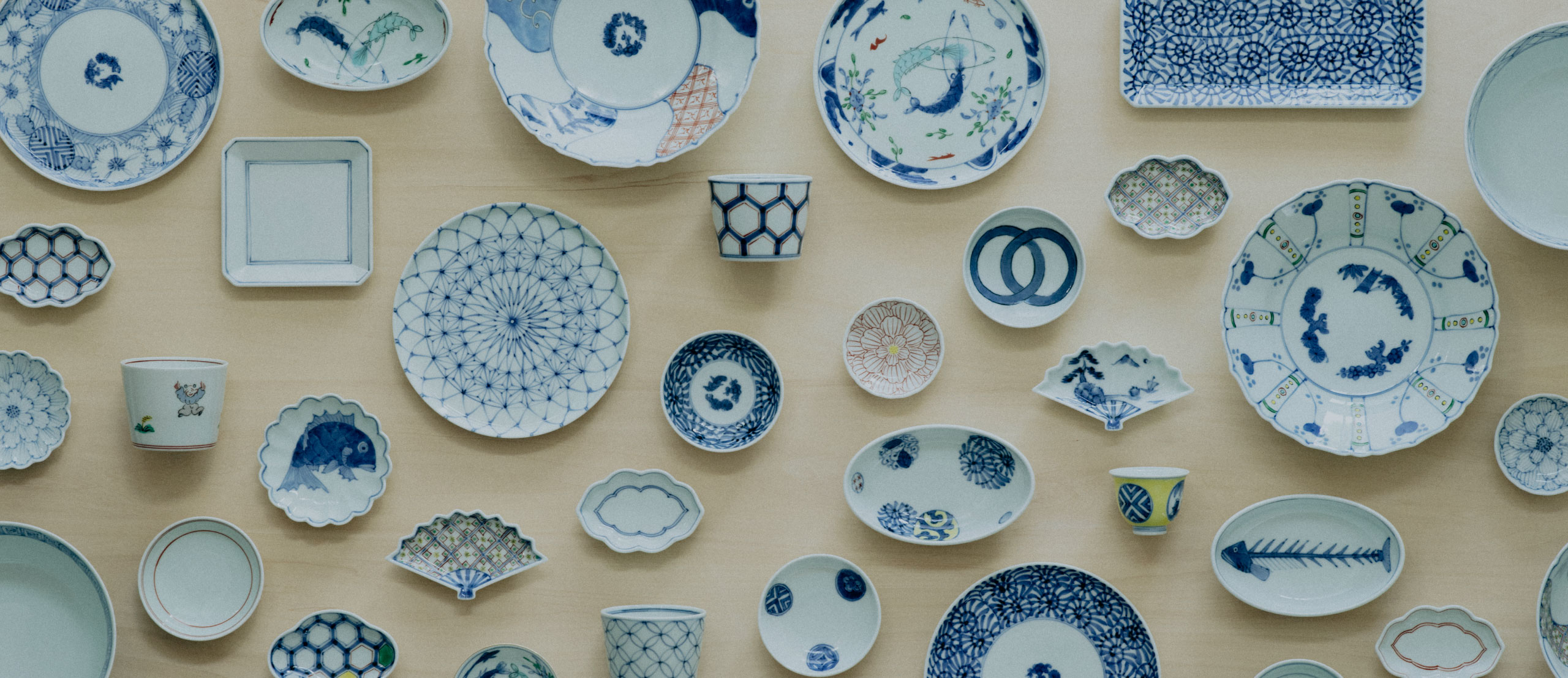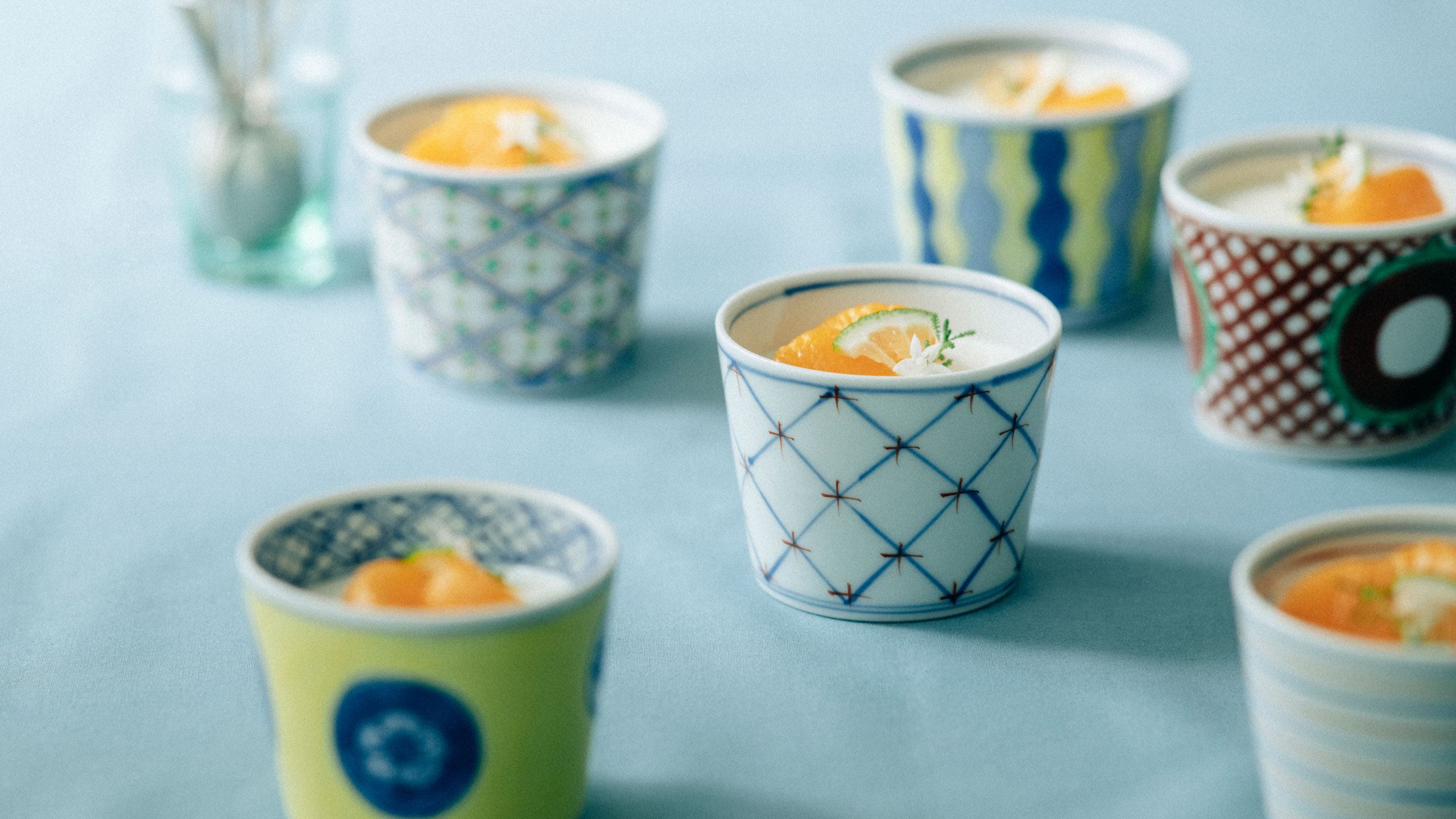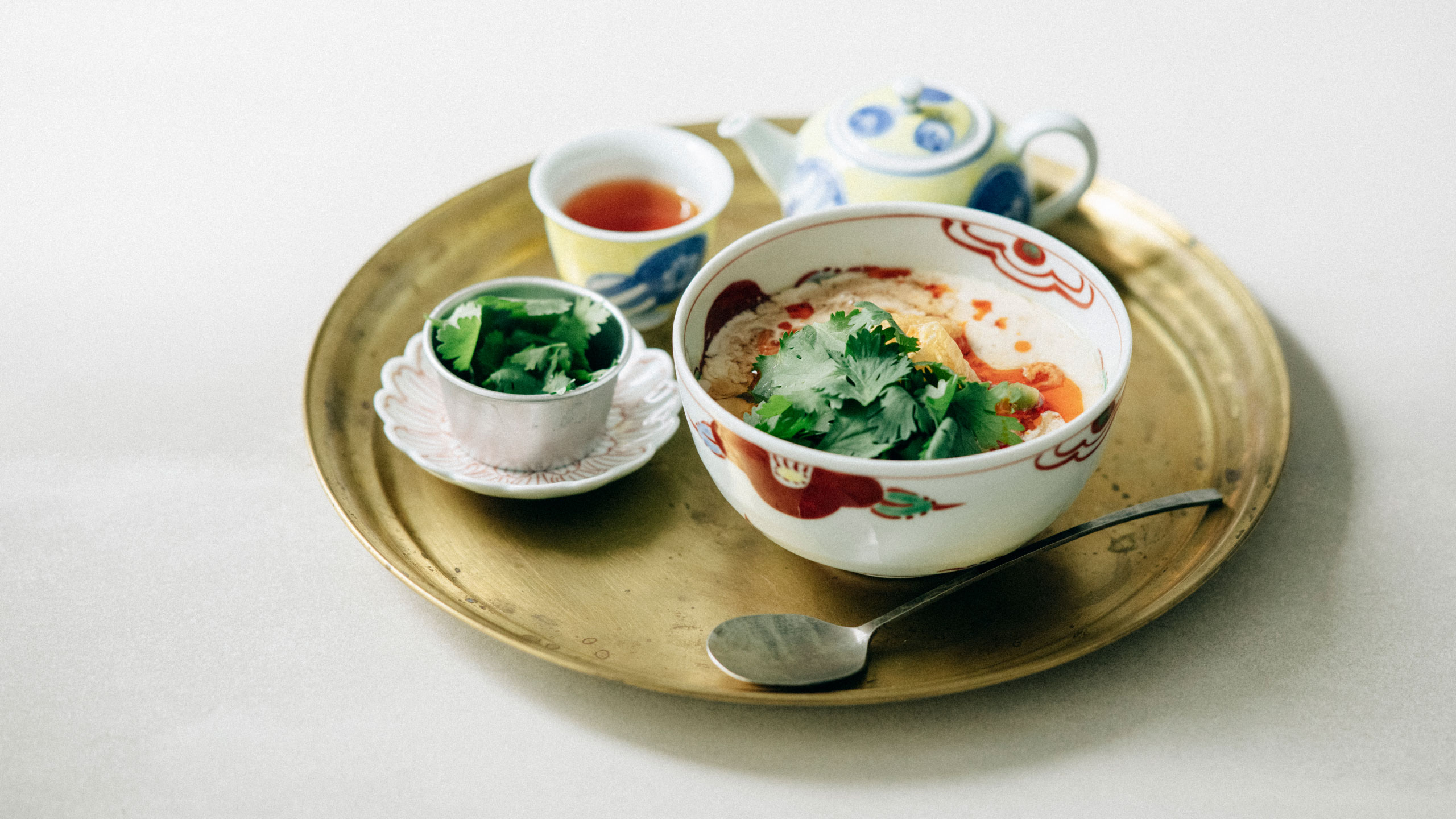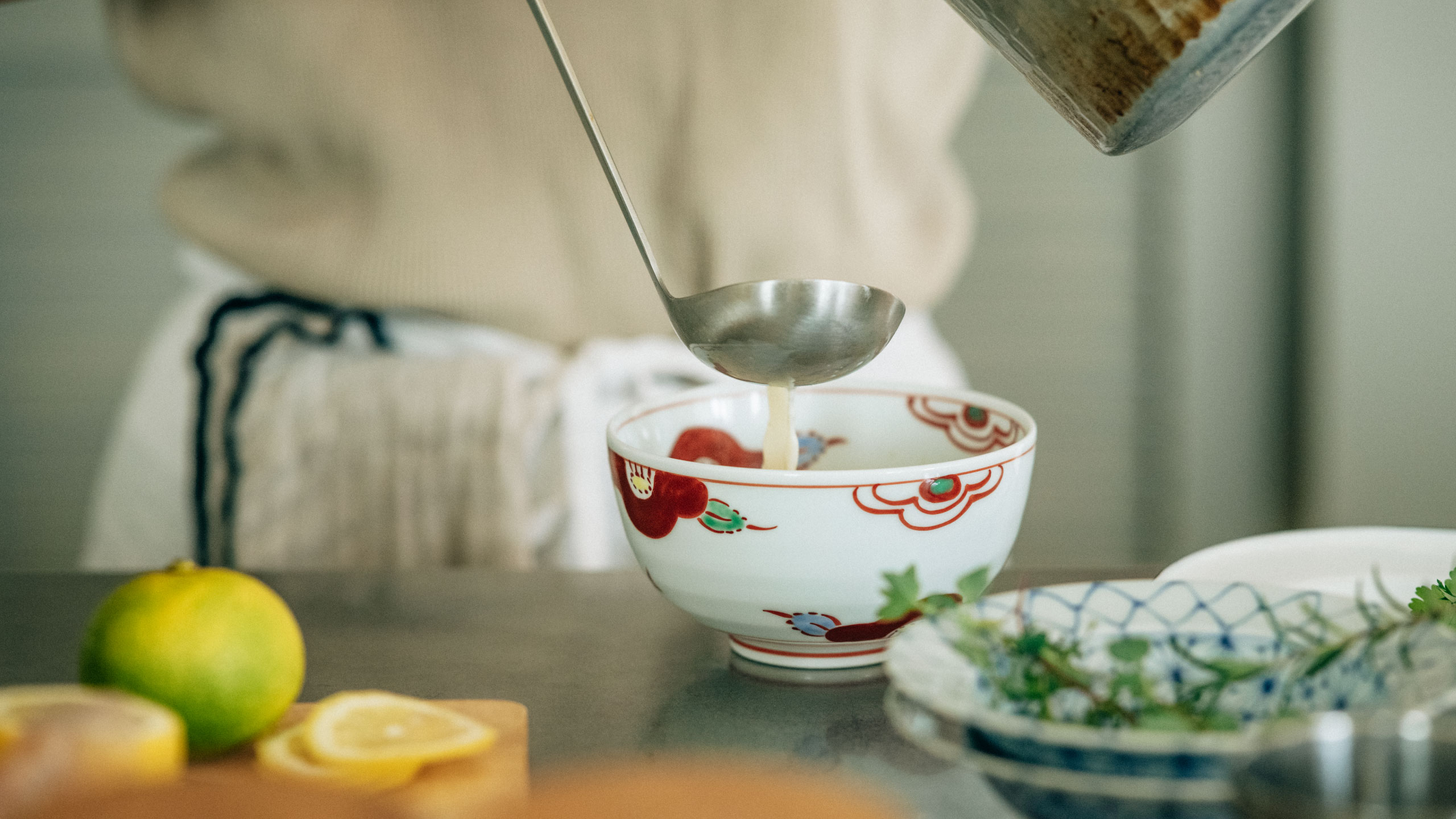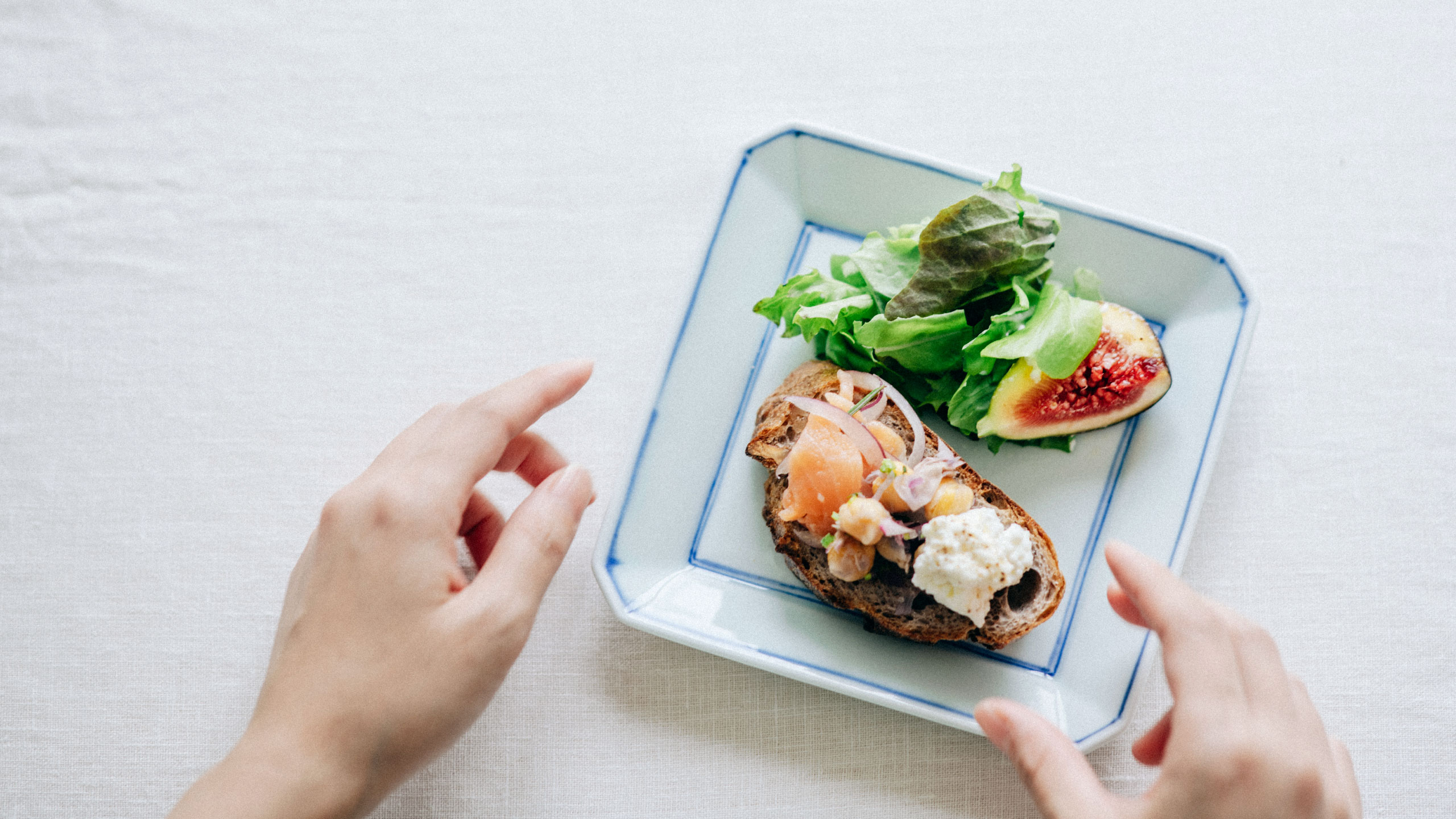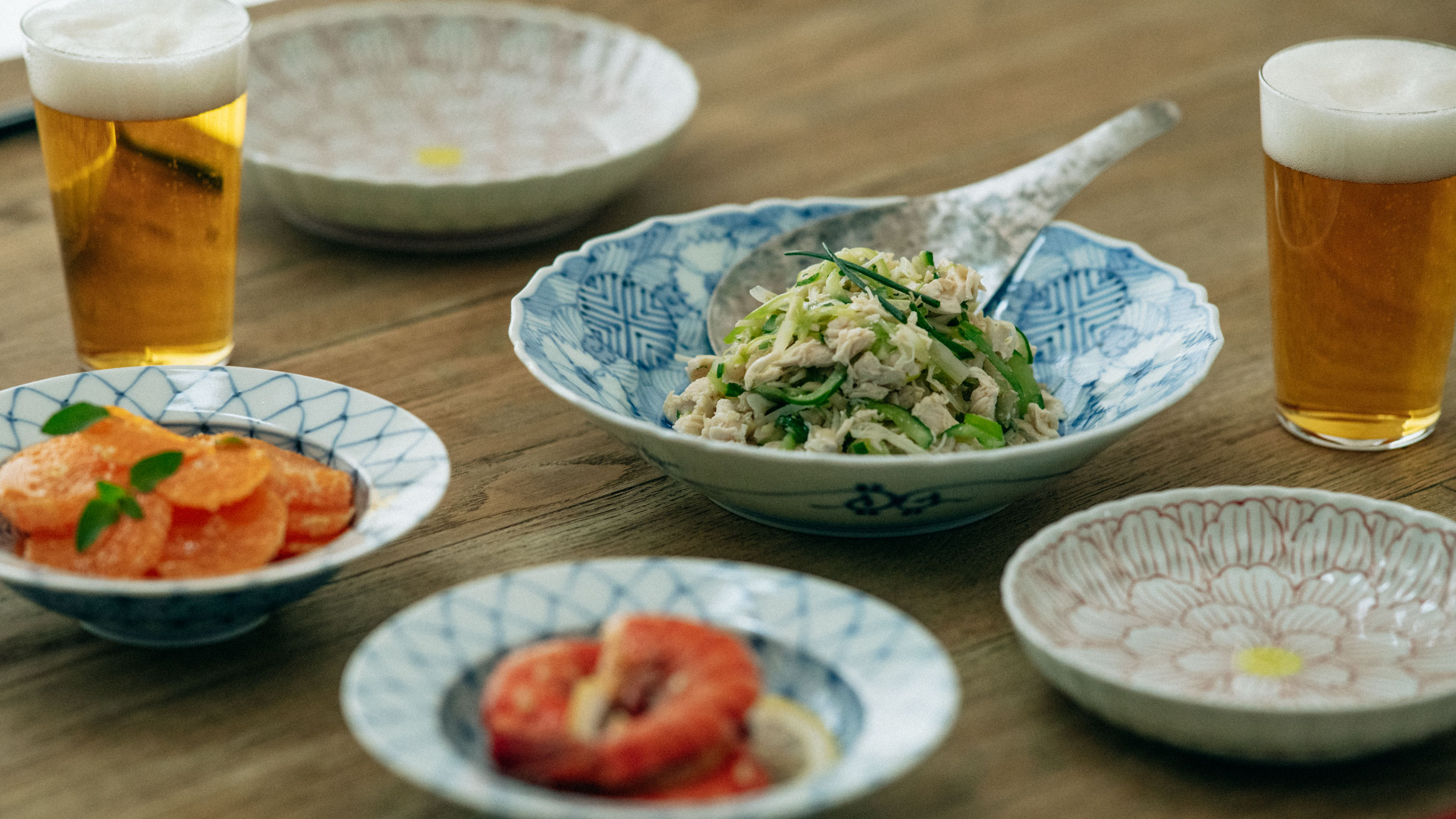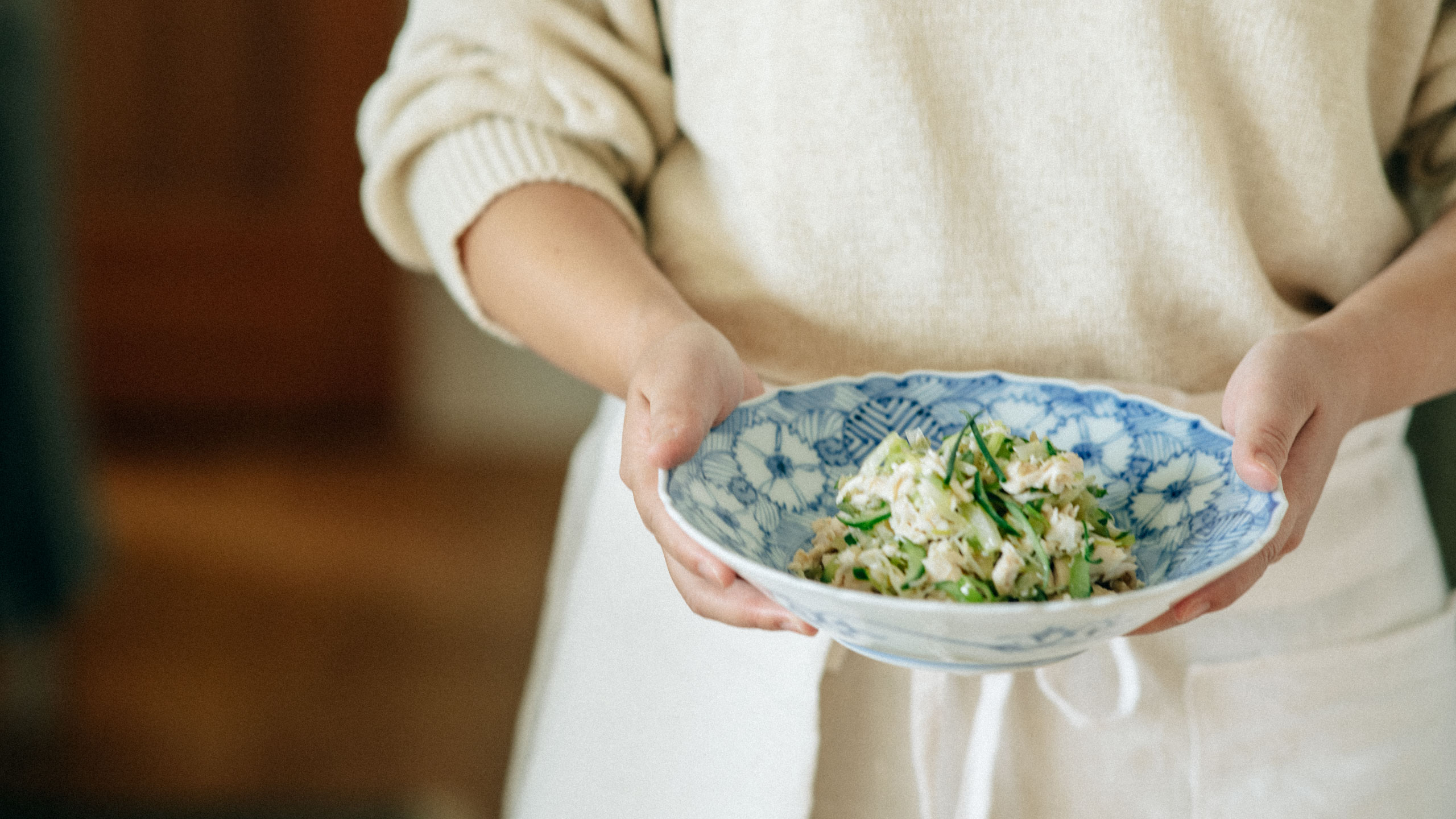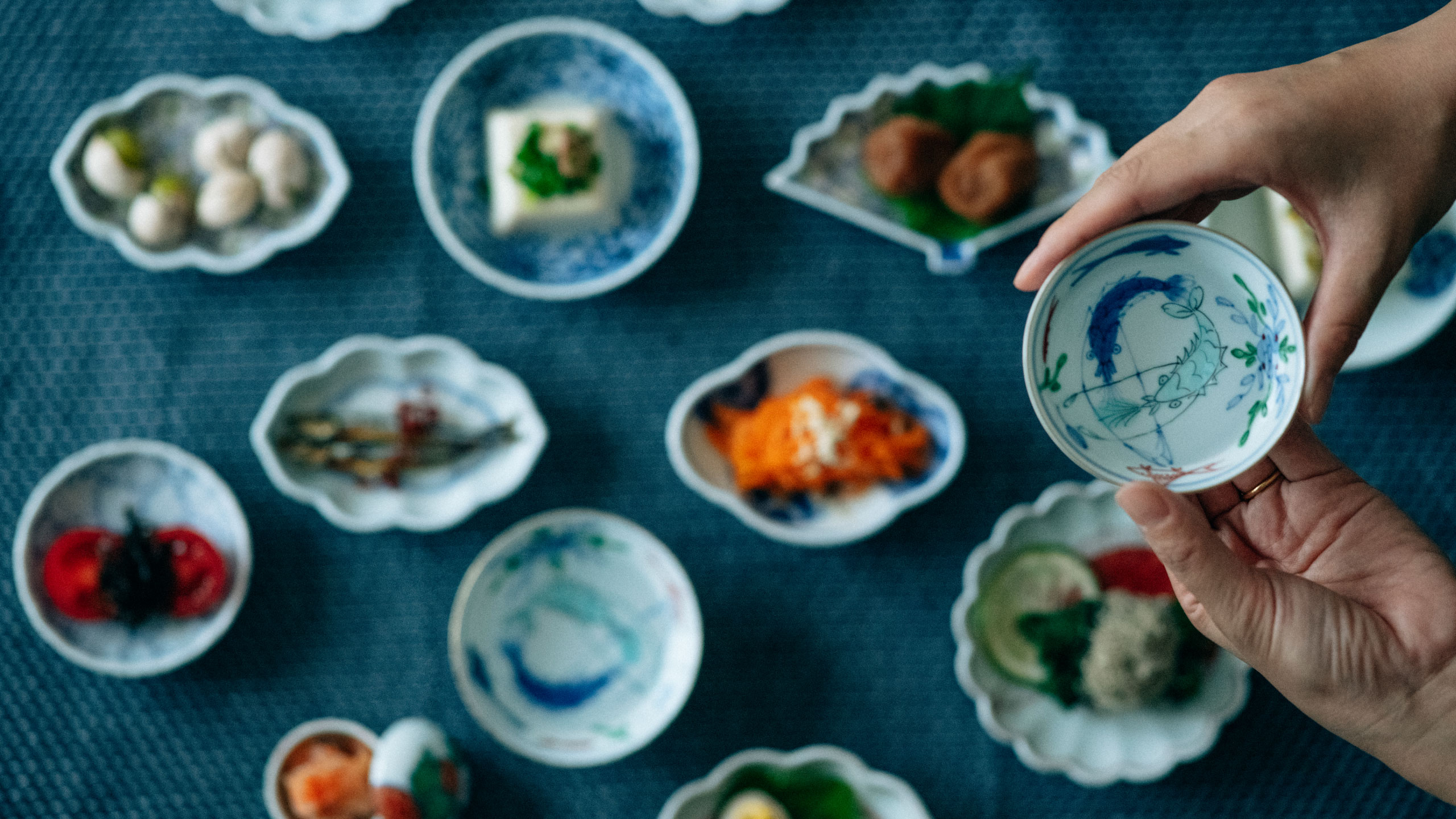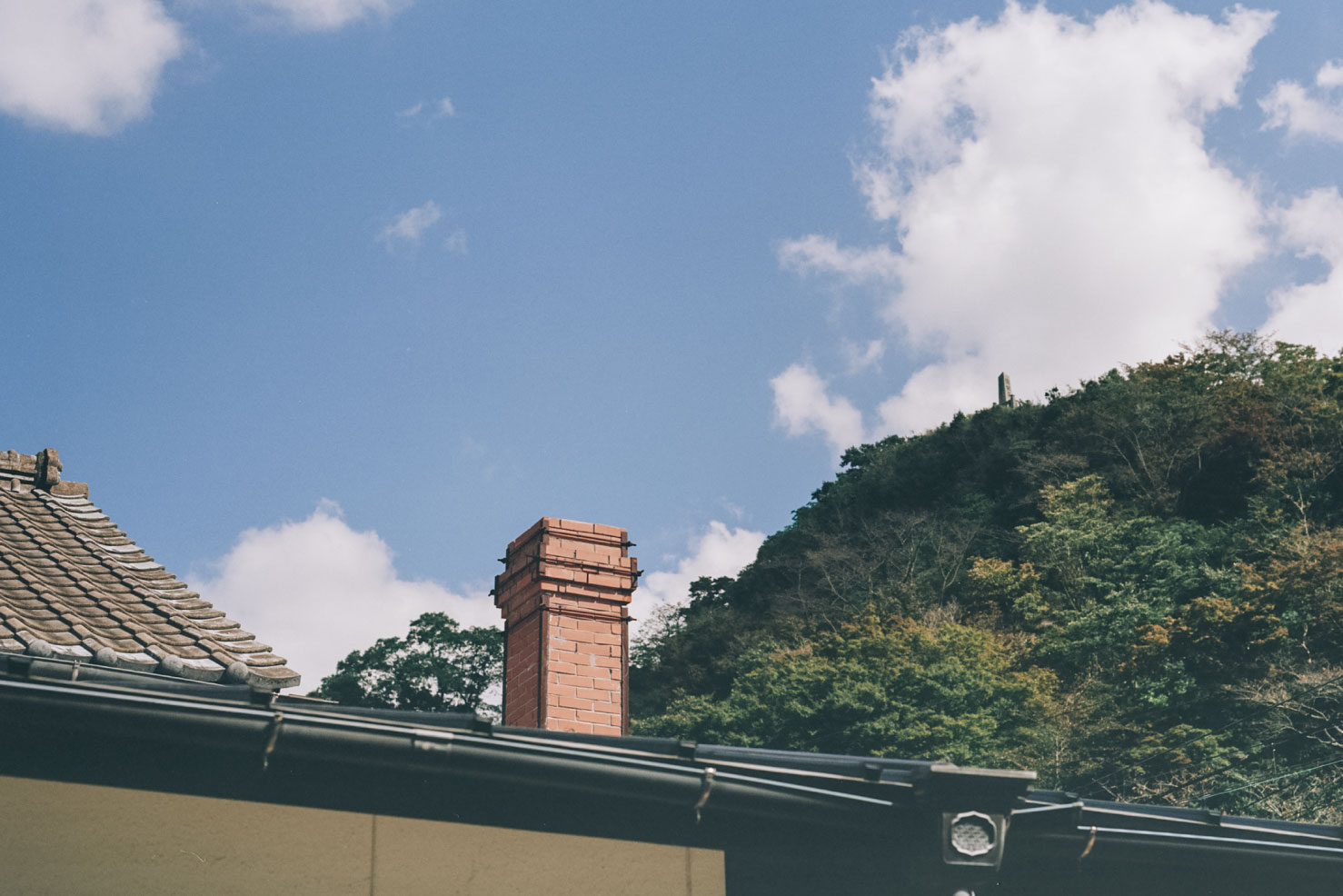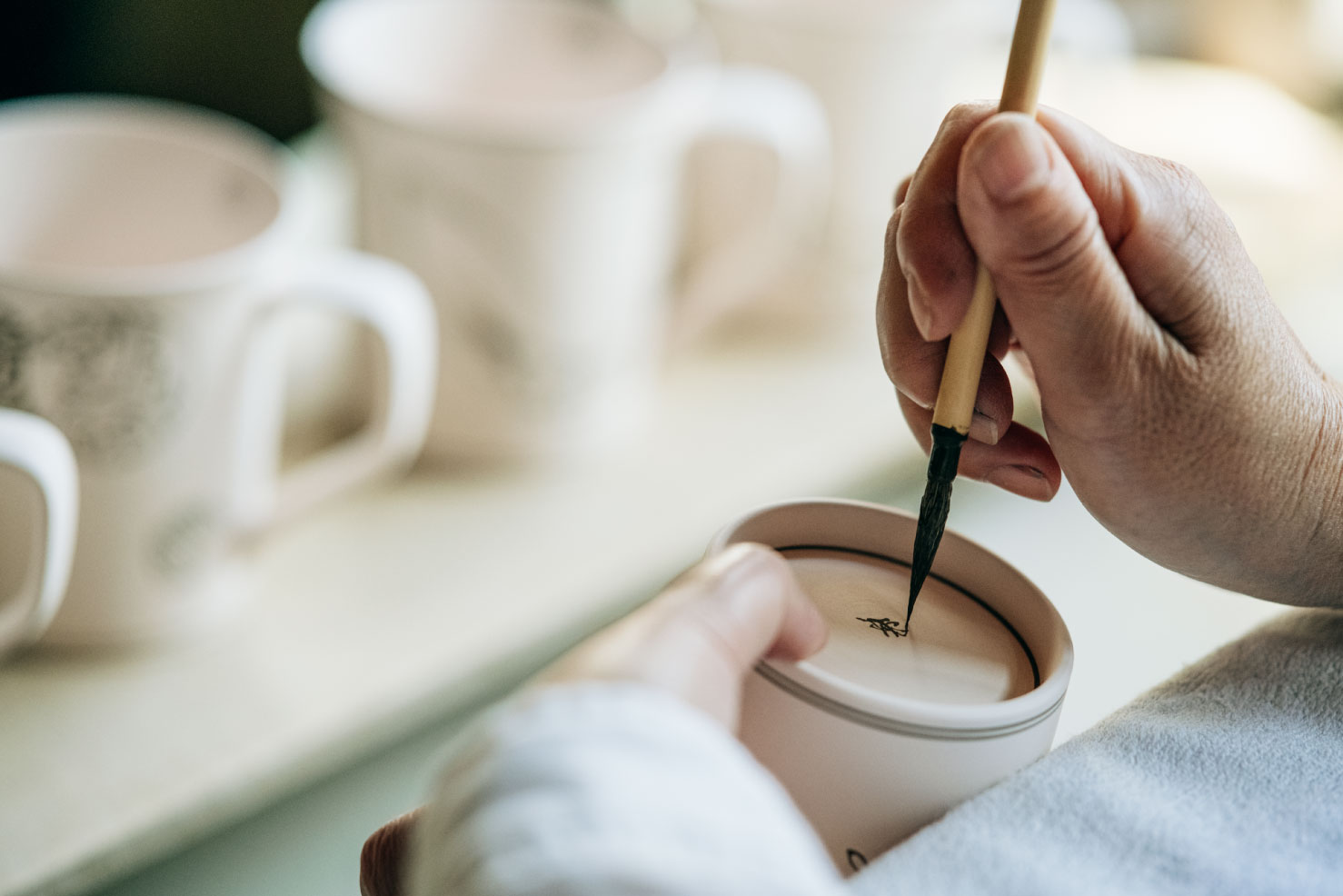

Arita ware (Arita-yaki) is a broad term for Japanese porcelain made mainly in the area around the town of Arita in Saga Prefecture. According to historical records, the discovery of high-quality pottery stone near this area in the early 17th century led to the beginning of Japanese porcelain production.
Arita ware was originally characterized by its thin, translucent white finish and an underglaze that featured blue as the base color. This artistry has evolved throughout the years into vibrantly painted artwork.
This porcelain is also internationally recognized as “Imari” because of the port from which it was shipped to the West (mainly to Europe). Actually, old Imari ware, which was known as Koimari back then, was a kind of Arita pottery. However, old Imari ware was often more heavily decorated than classical Arita pottery, with lots of blues, reds, and gold. Nowadays, Imari and Arita are two different establishments that produce unique porcelain.
Pottery fans all over the world appreciate and treasure Arita ware as a traditional craft that represents Japan.
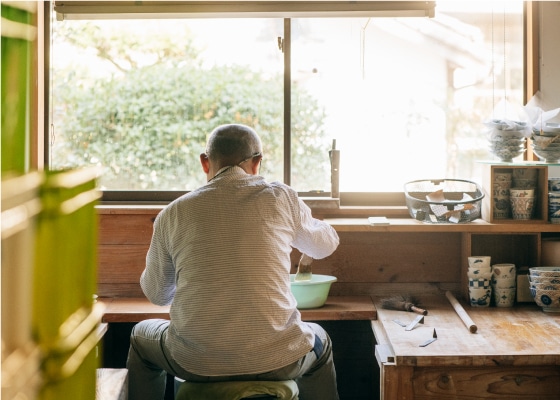

The Keizangama Kiln was opened in 1957 in an Arita valley town abundant with natural features.
Passing down the tradition through generations for more than 400 years,all products are handmade with a focus on hand-painting technique, and our family strives to keep the light of its history alive.
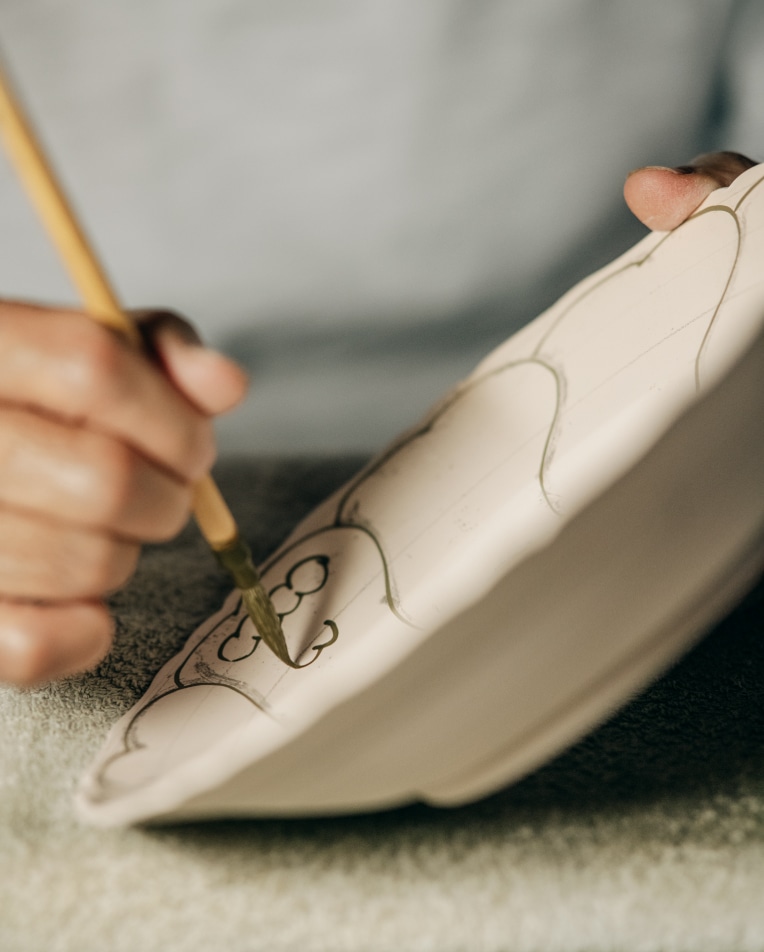
What is created by human hands reflects the creator's inner self.
We have been engaged in producing pottery with the hope that the products of Keizangama will enrich and fulfill the everyday lives of our customers.
The Process of Making Arita Pottery

Scraping and Forming the Pottery Stone
Pottery stone, which is the basic material made into porcelain, is a natural resource that has been formed over tens of thousands of years and is known as one of the world's rarest and most luxurious raw materials. This stone is molded, scraped, and shaped.
Bisque Firing
The molds (formed ware) are placed in the kiln and bisque fired for the first time at about 900 degrees.
Tracing and Transferring
A thin piece of washi paper is rubbed against the surface, and the outline of the hand-drawn draft is transferred onto the molds.
Underglazing (Outline)
This is one of the typical traditional techniques of Arita ware and makes it truly worthy of being called “craftsmanship.”
Underglazing (Filling in the Patterns)
Shading is added to the pattern using a thick brush soaked in plenty of paint. This technique requires a high level of skill and is a process that later transforms the surface of the porcelain into a beautiful texture.
Glazing
The ware is dipped in a glaze that takes on a clear vitreous quality when fired. This process gives the porcelain an attractive, glossy, and waterproof finish.
Kilning-in, Glaze-firing (Honyaki) and Kilning-out
The ware is fired at a temperature of approximately 1200˚C for a second time. The underglaze color changes to bright indigo when fired.
Overglazing
For the final touch, bright colors, such as red, green, and yellow, are painted onto the piece to decorate it. Such gorgeous vivid colors that make use of the traditional Arita pottery technique are worth paying attention to


Use and Care of Pottery
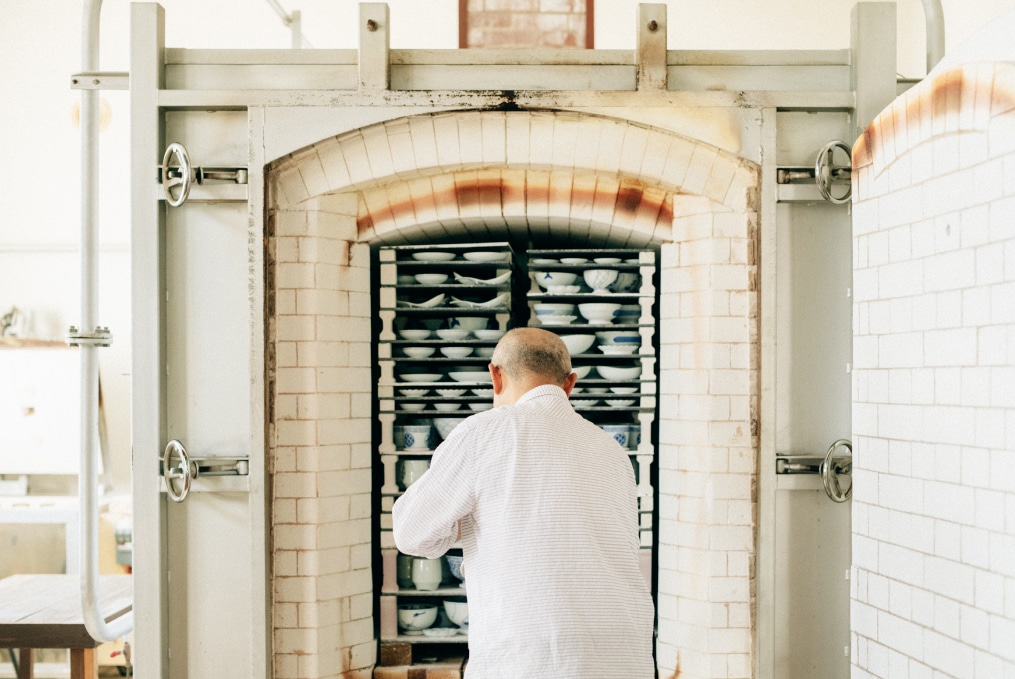
Everything about Keizangama pottery is
complemented by using it to serve food.
Based on our philosophy of
"craftsmanship with food as the main attraction,"
we believe that the true value of tableware
can only be realized when it is actually used.

We believe tableware is best when casually used for meals in daily life.
With the aim of our products to be used as “essentials for everyday use,” we are dedicated to creating beautiful tableware that emphasizes the smallest detail.

Our tableware will give you a sense of the beauty that is uniquely Japanese. For example, you may gaze at the tableware and notice a whale swimming leisurely in the white porcelain, a couple of picturesque prawns, and red snapper, which is said to bring good luck in Japan.
Based on traditional Arita pottery patterns, these paintings are original designs created by craftsmen with a modern sensibility.
The hand-painted patterns created by skilled craftsmen are elegant and tasteful. Each piece offers a different expression, even if it shares a common theme.
This beautifully painted tableware can greatly enhance the feel of everyday meals.
Soba Choko
(Soba Sauce Dipping Cups)
With the widest range of variations, Keizangama is known as a brand synonymous with “soba choko cups.” We have more than 100 different designs available at any given time, and they are loved by thousands of customers. Soba choko pieces are used for soba noodles, a traditional Japanese food, and are a common tableware item that is very familiar to Japanese people. These vessels were originally designed for dipping soba noodles into soup stock. They can also be used as cups for beverages, such as sake and green tea; for serving food, and as dessert cups for yogurt, ice cream, and suchlike.
Soup Bowls and Rice Bowls
In Japanese cuisine, it is common etiquette to eat with the dishes in one's hands. The vessels used in Japanese dining typically feature a rounded shape that fits comfortably in the hand and a high bottom that makes these dishes easy to hold even when hot food is served in them. Bowls can be used for soup, stew, noodles, salad, or any other kind of meal.
Plates
The most commonly used dinnerware items are plates. The designs of our plates are delicate and modern while maintaining the tradition of Arita-yaki pottery. Taking advantage of the high strength of pottery, the thin, light, yet sturdy plates are very easy to use in everyday life.
Deep Dishes/Bowls
Deep dishes are shaped for easy use in any kind of global cuisine. The painted patterns are visible even when used to serve generous amounts of food. Depending on your ideas, these deep dishes can be used to display fruit or serve salads, soups, noodles, or any other type of food.
Sake Utensils
A drinking set to enhance the enjoyment of Japanese sake. Sake utensils are highly popular as collector's items. Keizangama's sake cups are made with an emphasis on the smooth and gentle sensation felt when the cups touch the lips.
Instructions for Use and Care

About Our Products
- Since all our products are hand-painted, each piece is slightly different and may display uneven color development. Please note the unique texture of handmade houseware and enjoy each piece's different feel and artistry.
Handling Precautions
- Do not cook the tableware directly over the stovetop or put it into the oven, as this may cause the tableware to crack or break.
- Do not put tableware decorated with gold or silver in a microwave oven.
- To prevent scratches, do not use wire wool, abrasive scrubbing brushes, or gritty cleansers when washing these items. Use a soft sponge or cloth instead.
- When bleaching, use dish bleach for the proper amount of time.
- (Cautions: only for overglazed tableware) Please do not use a dishwasher for dishes with an overglaze painting (mainly red-painted dishes with a rough texture), as the strong jet of water will gradually peel off the color.
- Do not use abrasive cleansers or scrubbers, as they will scratch the surface and peel off the overglazed patterns.
- Do not use chlorine bleach as it may cause discoloration or fade colors.
E-commerce site
